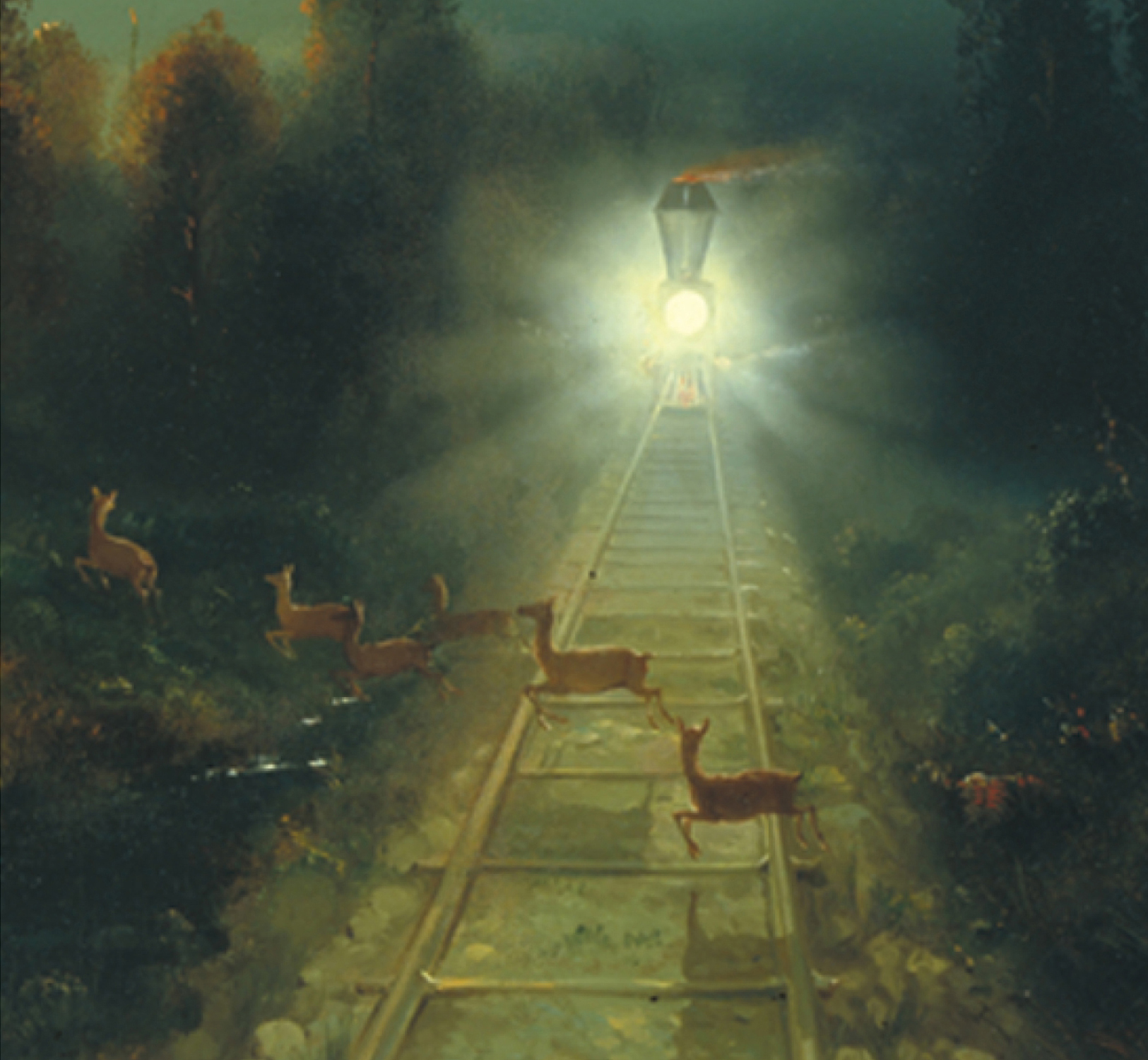The American Promise:
Printed Page 316
VISUALIZING HISTORY
The Path of Progress



This painting depicts a mid-
The natural order is illustrated by the forest on the right side of the painting, by the rock-
The locomotive barreling down the tracks is barely visible behind its blazing headlight, which illuminates the way forward and startles the deer accustomed to shadowed hiding places in the forest. The immense power of the locomotive contrasts with the skittish, vulnerable deer. suggesting the unstoppable momentum of industrial progress.
The left side of the painting shows a frontier farm cultivated by a family standing in the shadow of the log cabin. The principles of agricultural order represented by the farm are somewhat different from those of the industrial order represented by the railroad and the natural order represented by the forest. The stumps littering the fields suggest the farm family’s attitudes toward nature. Agricultural progress requires reordering nature. Notice that the farm family is not watching the natural beauty of the setting sun bathing the landscape in a golden twilight but instead is looking toward the artificial light of the locomotive. They have gathered outside their cabin to watch the train barreling along the boundary of their farm while smoke rises vertically from the chimney of their log cabin, unlike the smoke trailing backward from the locomotive smokestack.
Overall, the painting depicts the benefits and costs of progress for the farm family, the forest, the deer, the railroad, and American society in general
SOURCE: Autry National Center, Los Angeles; 92.147.1
Questions for Analysis
- How do the principles of order represented by the locomotive and railroad tracks contrast with the natural order?
- How does the agricultural order compare with the industrial and natural order in the painting?
- How does the painting portray the costs and benefits of progress?
Connect to the Big Idea
How did Americans alter the physical landscape of the nation in the early nineteenth century?